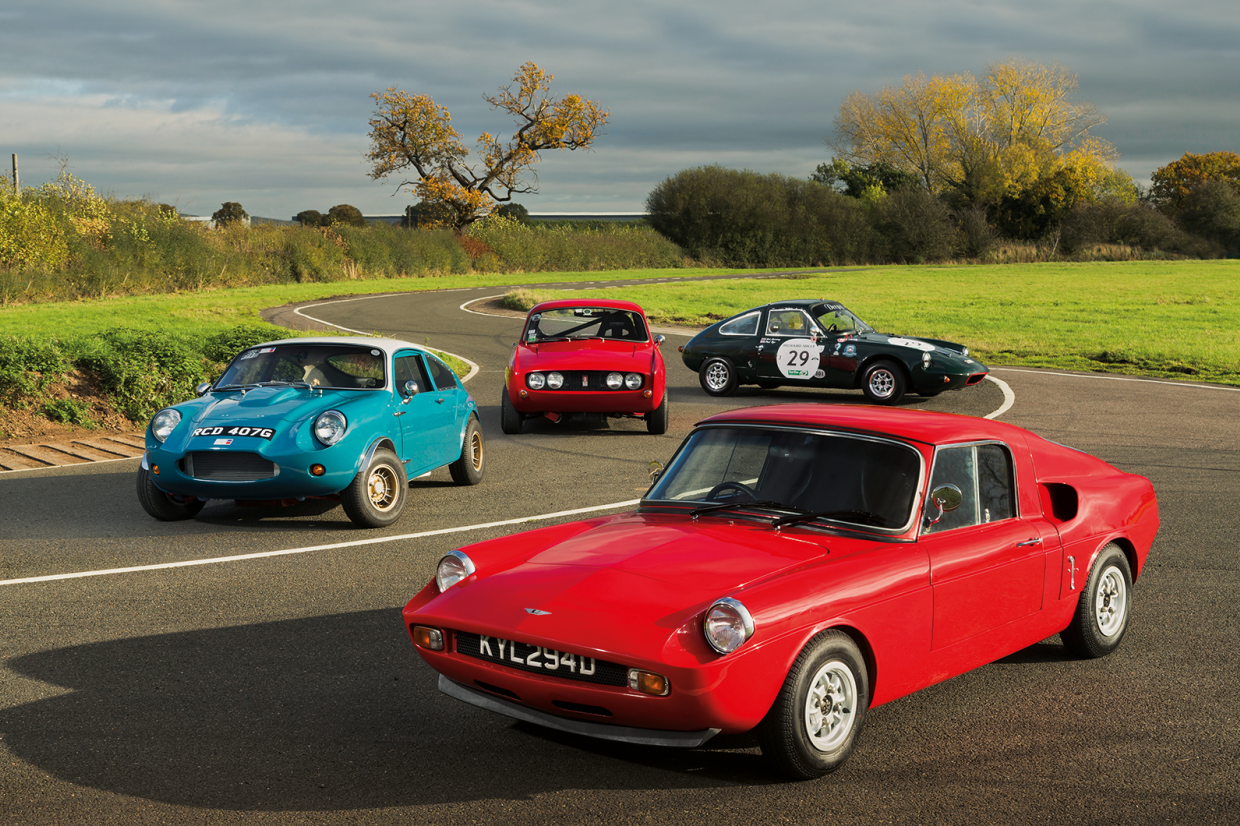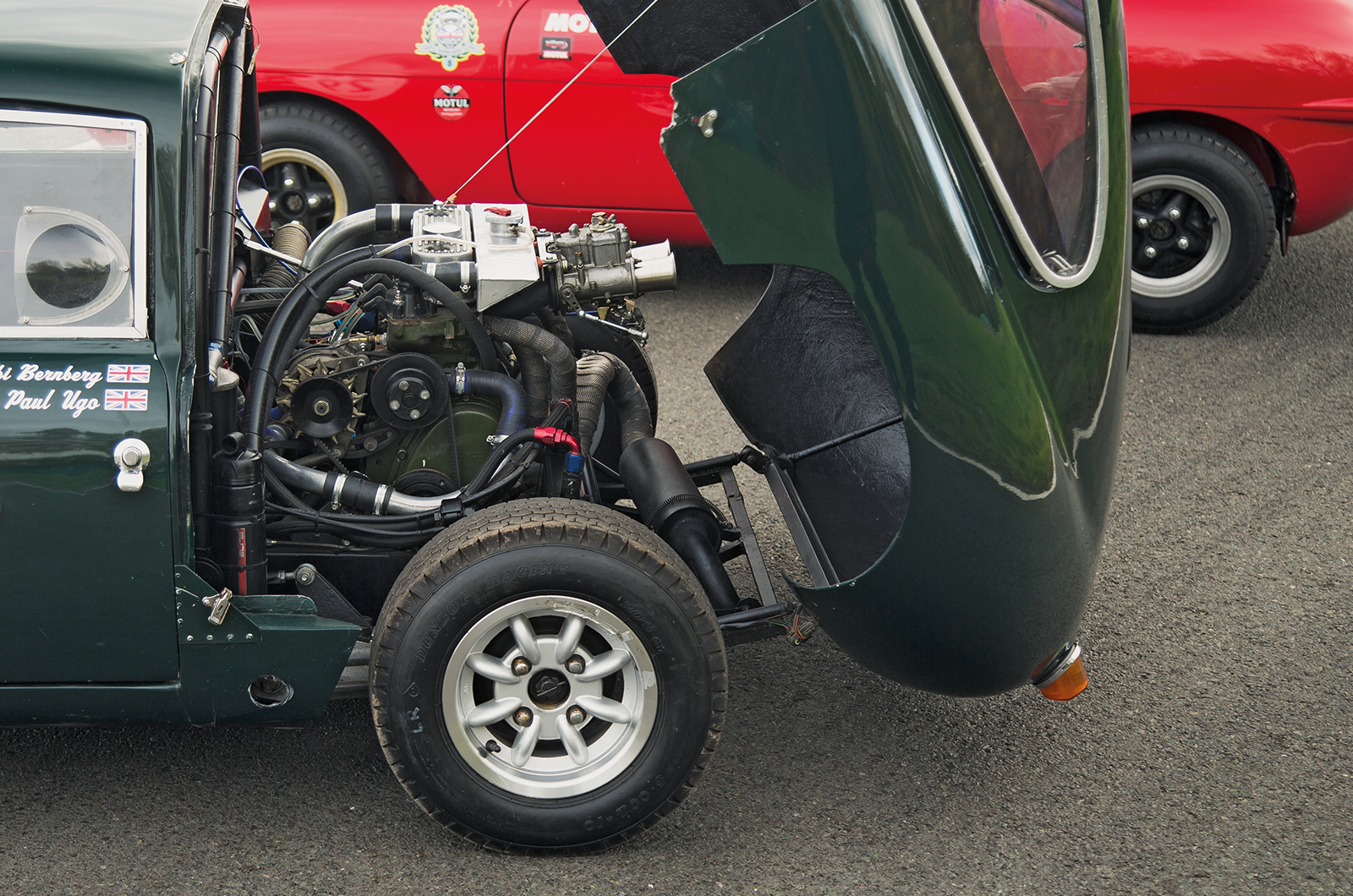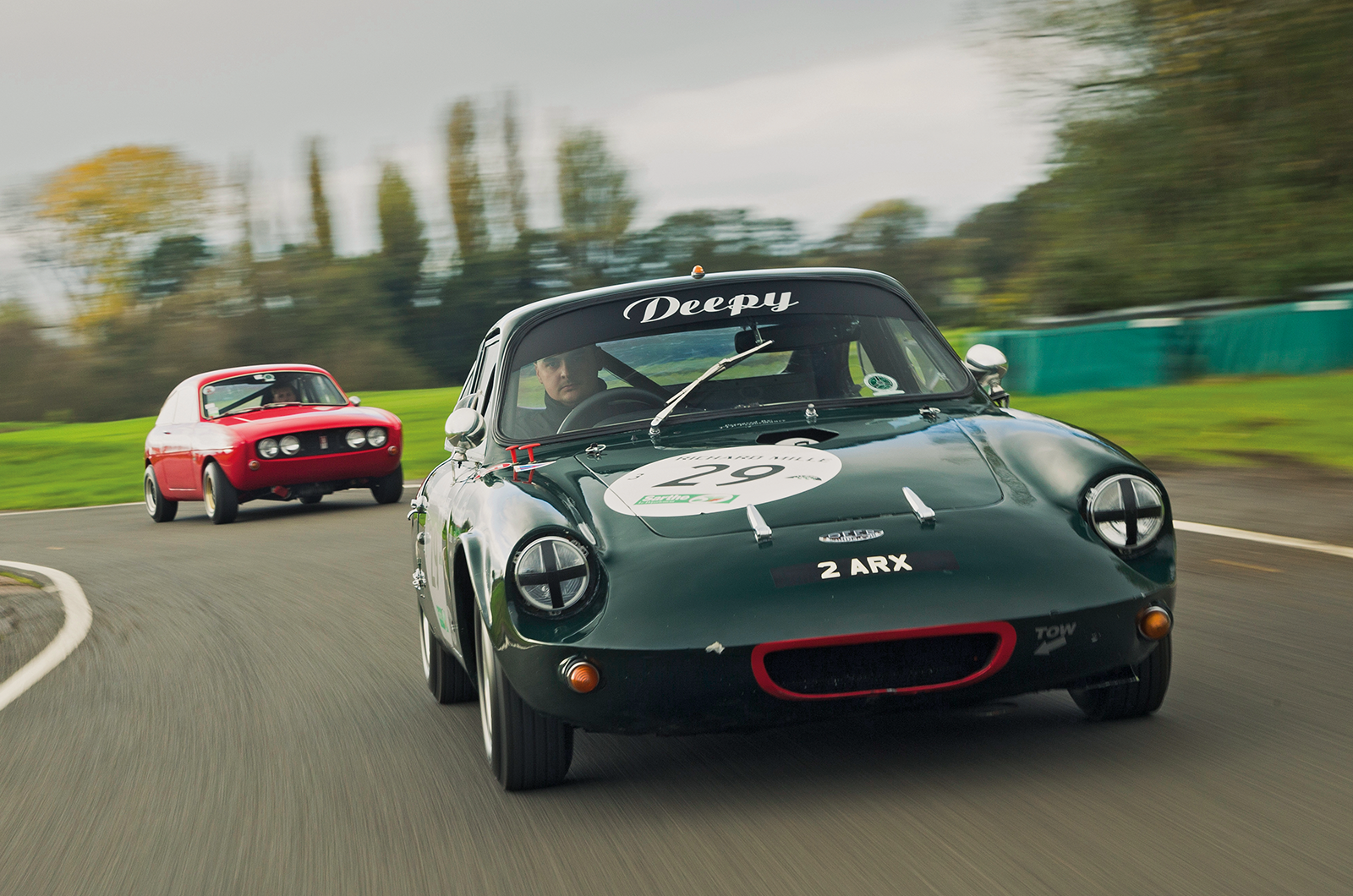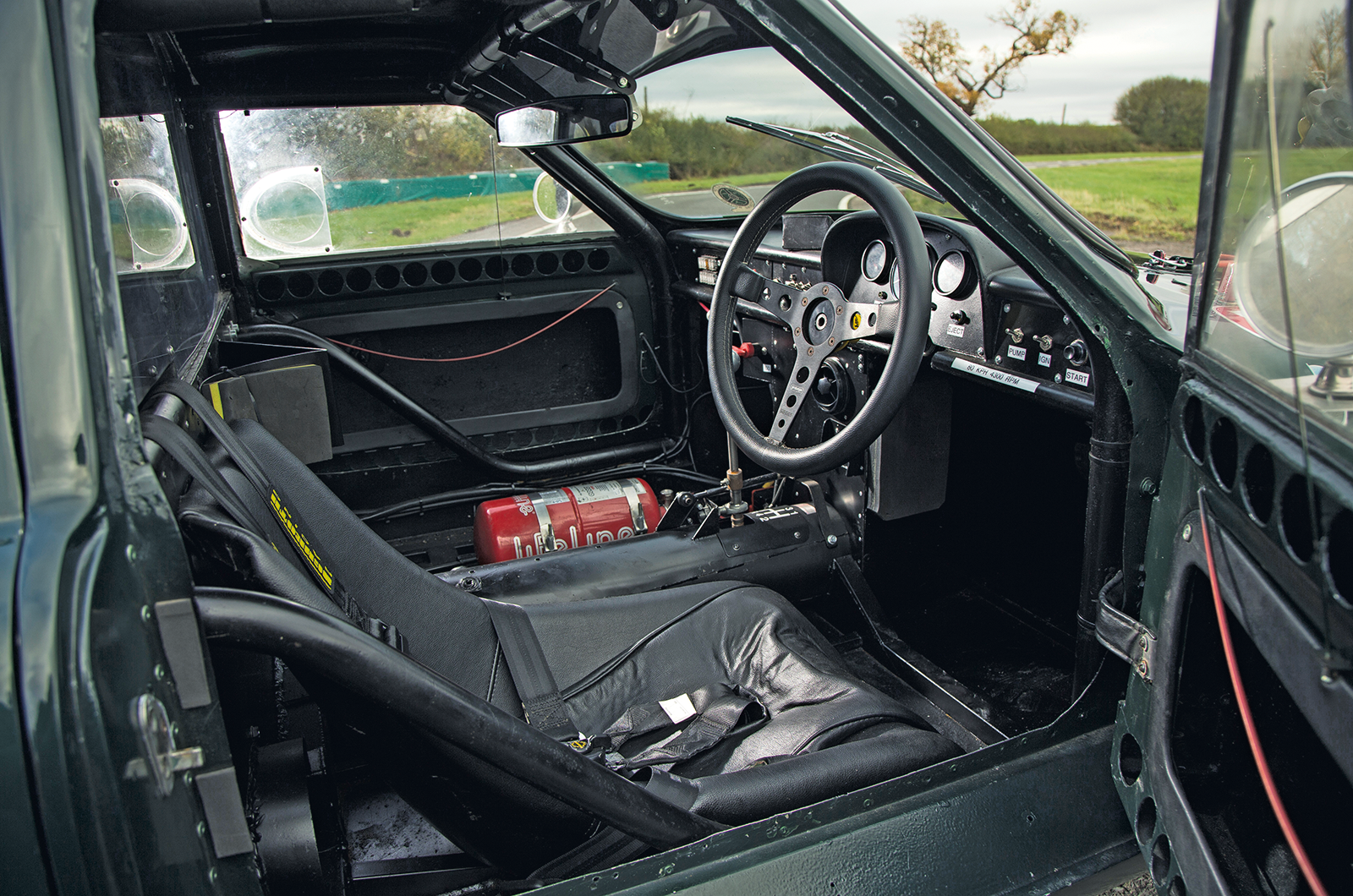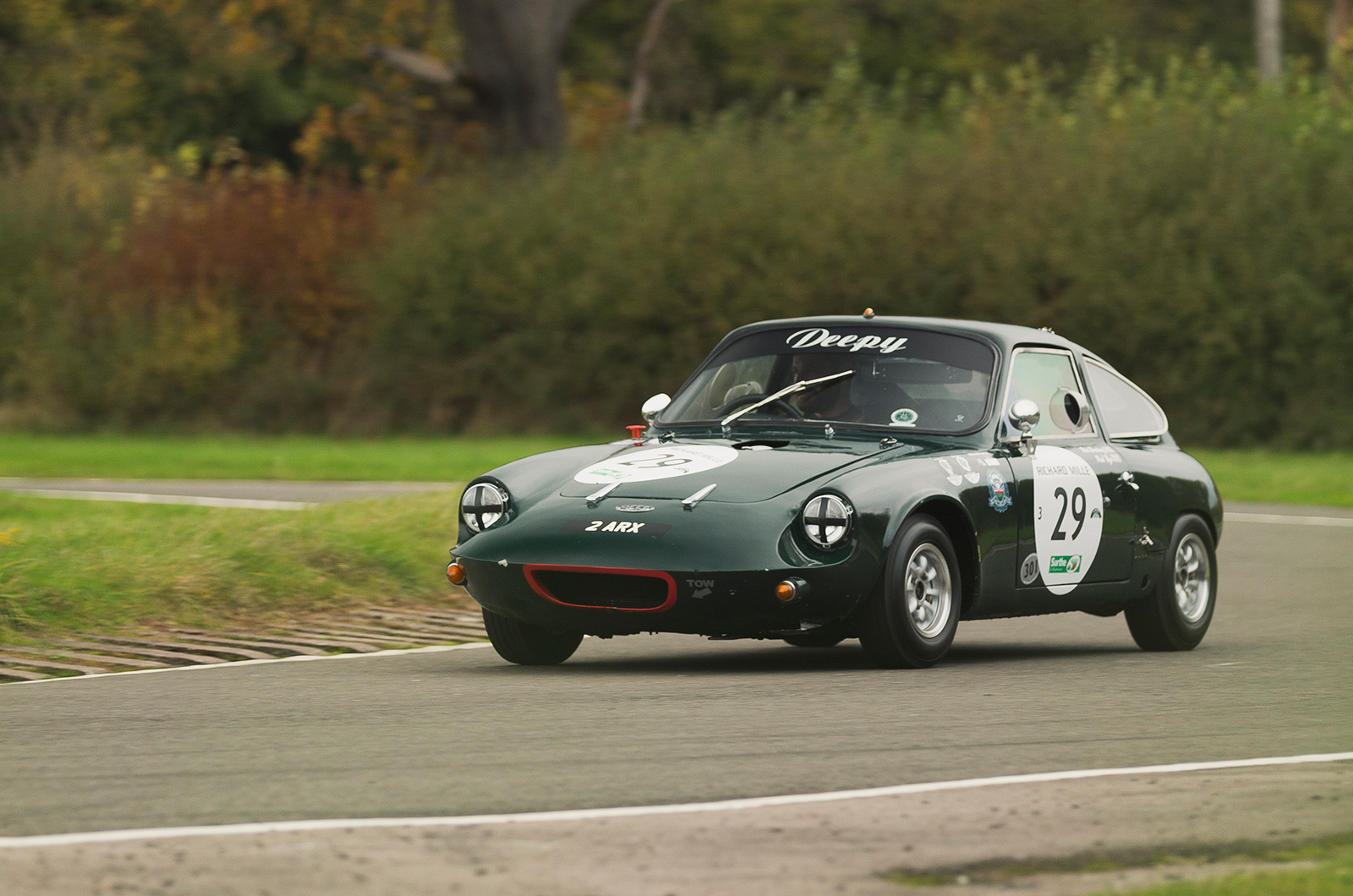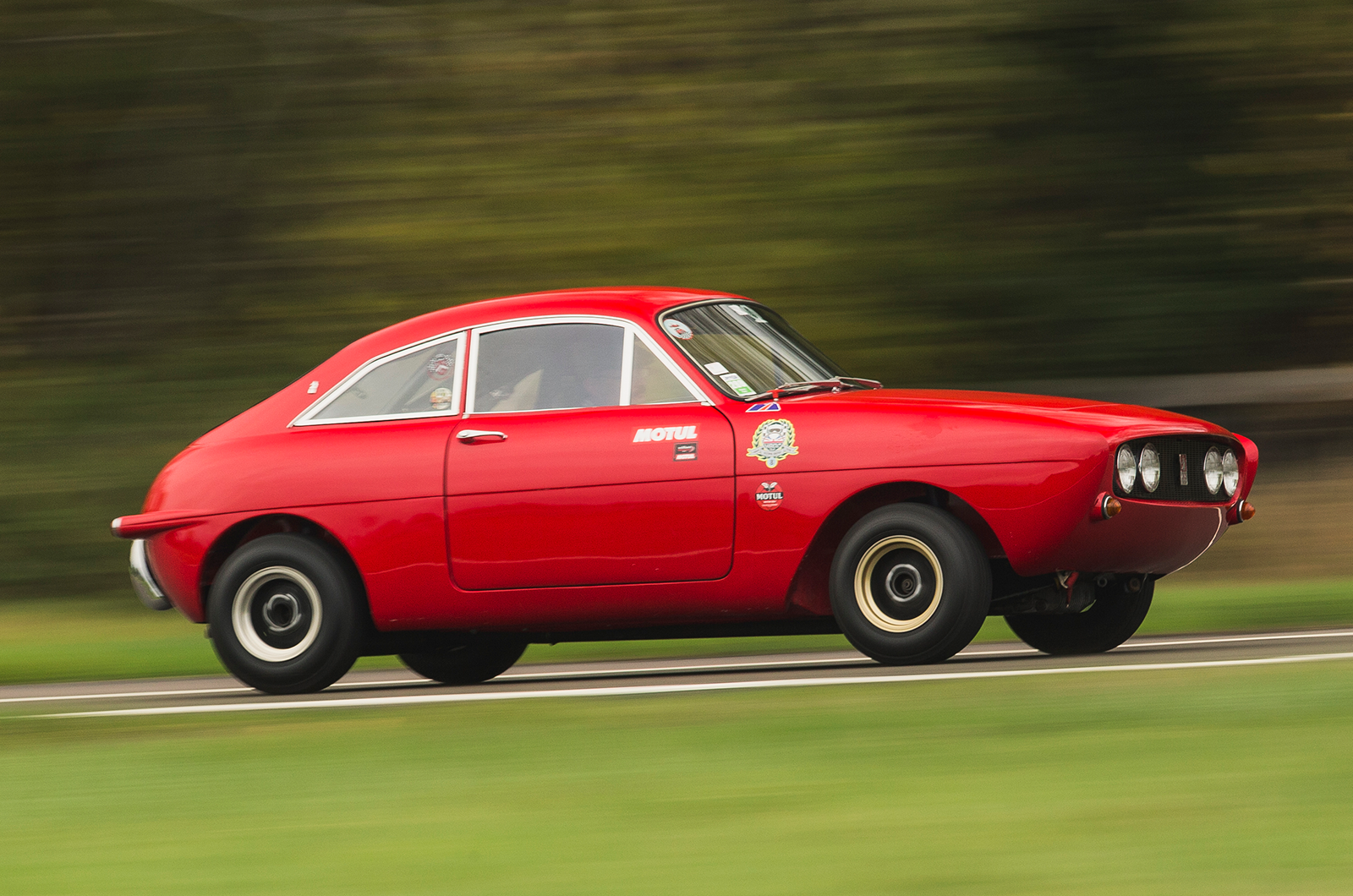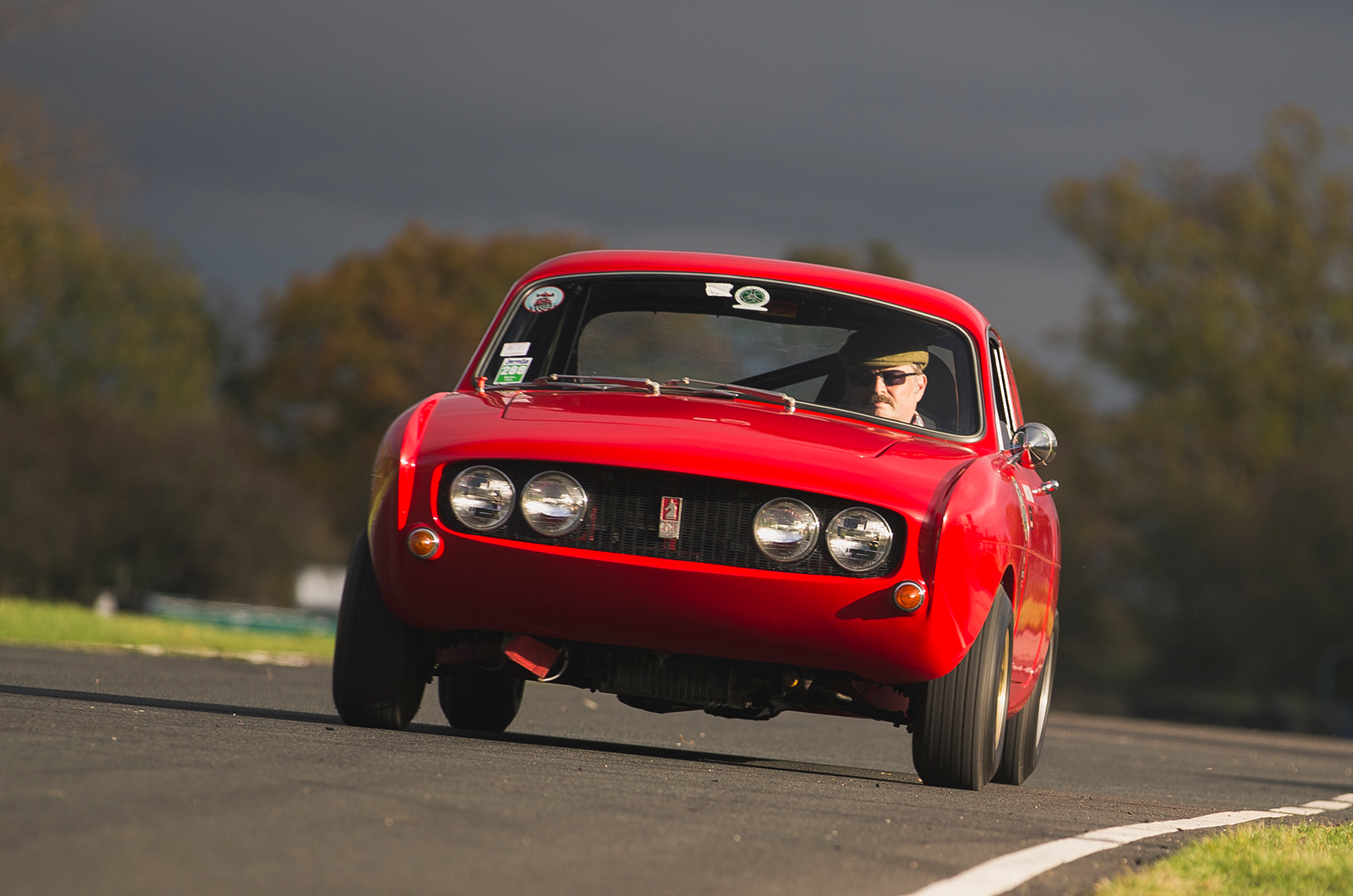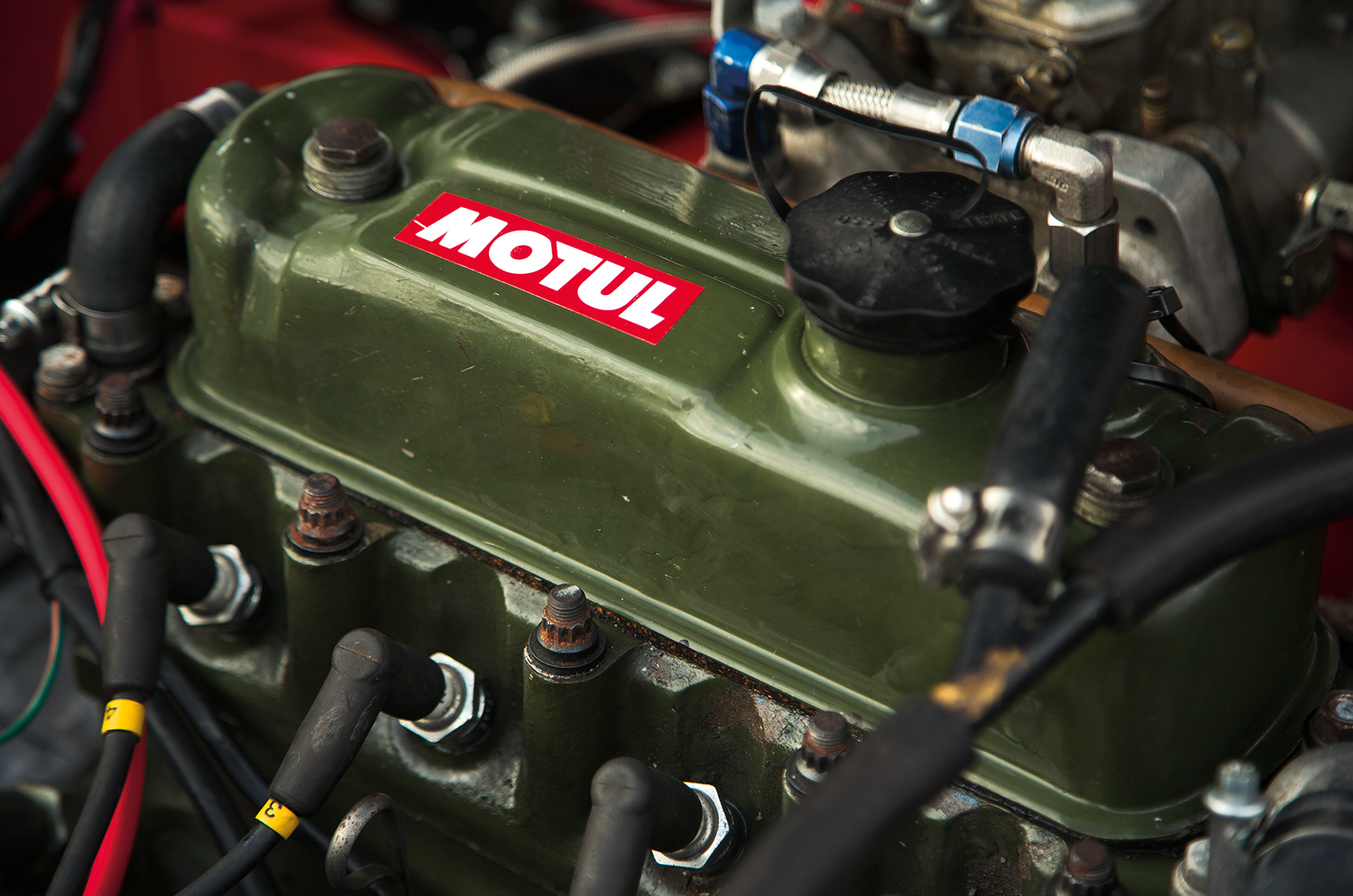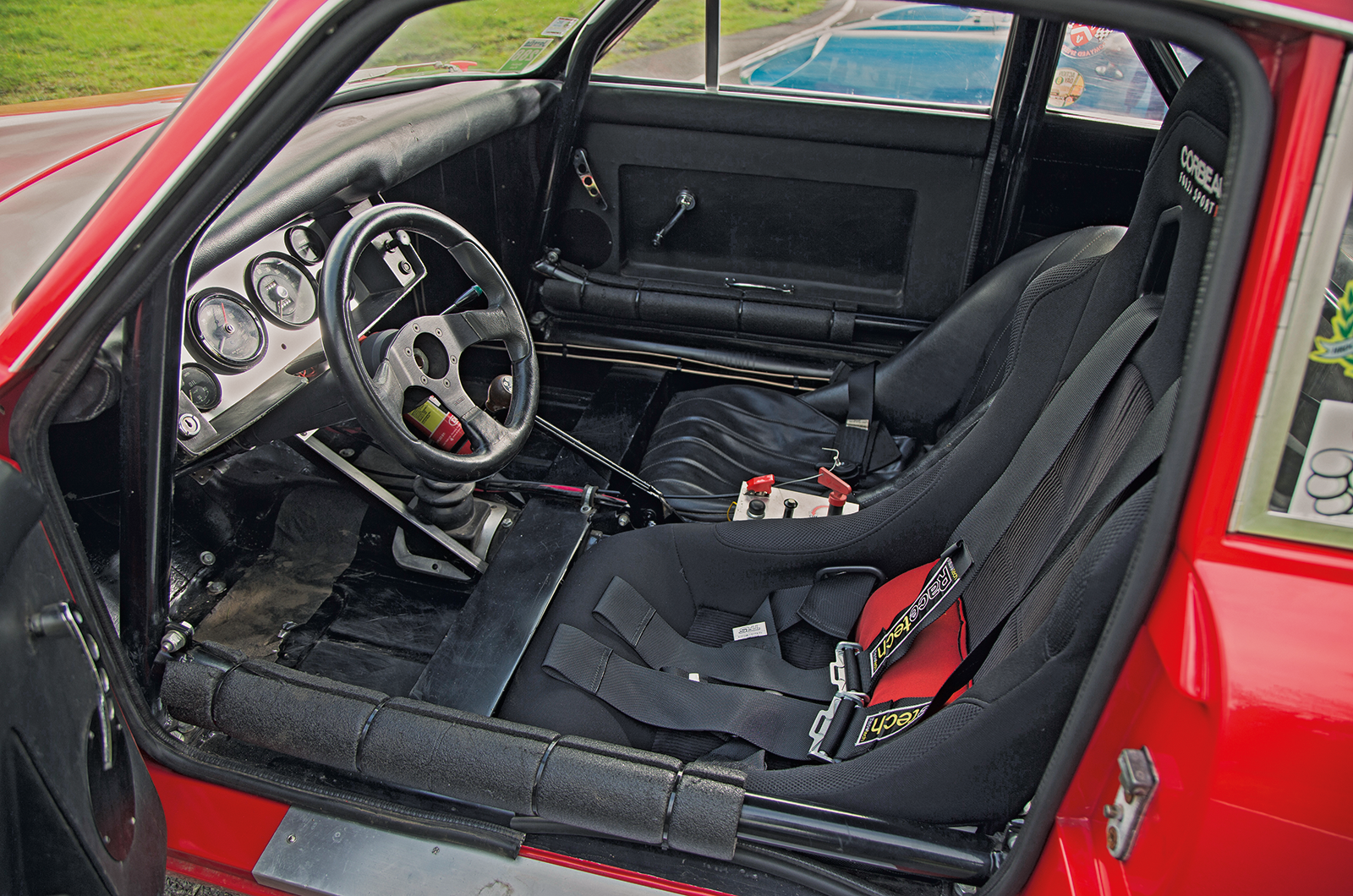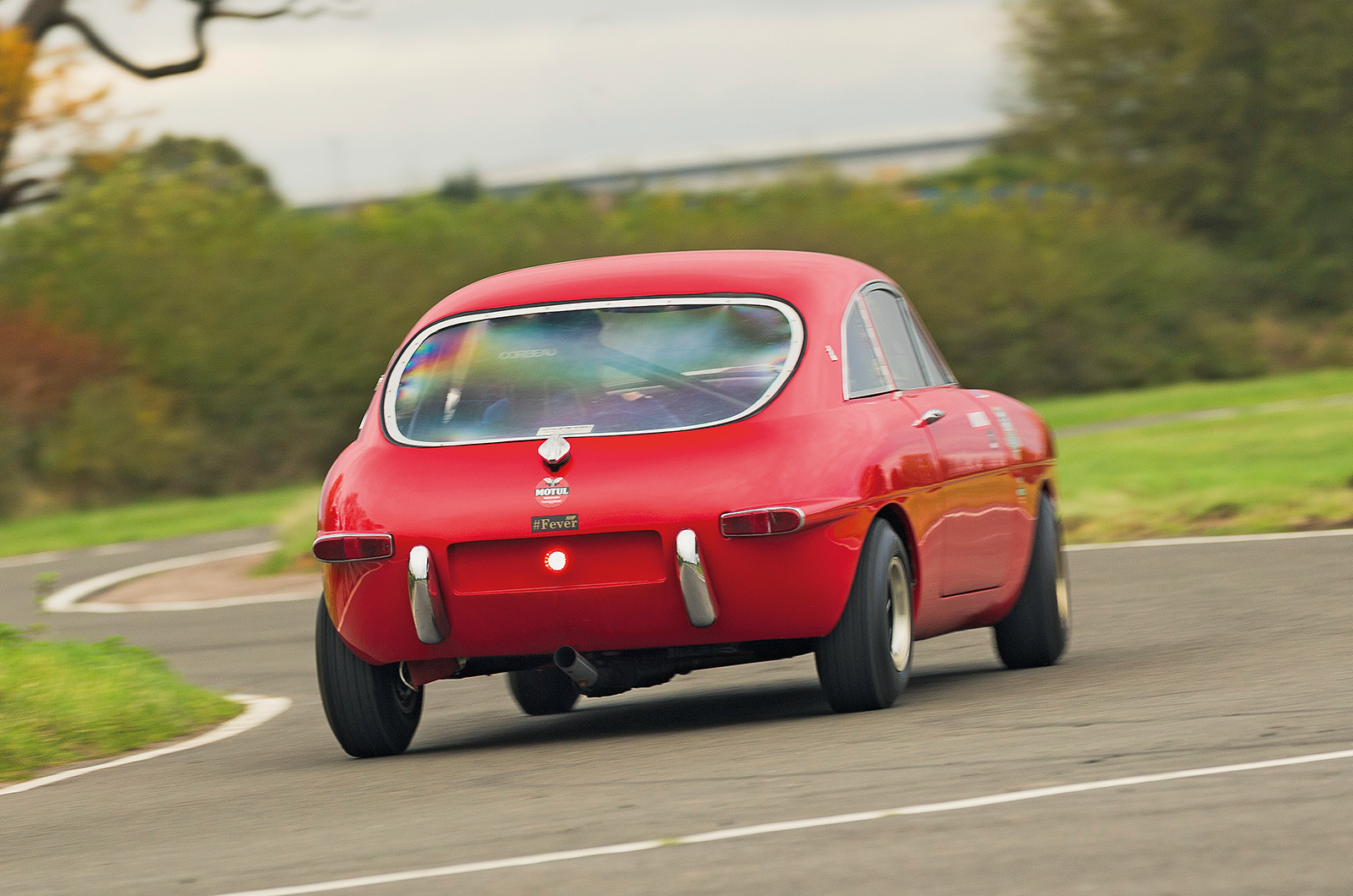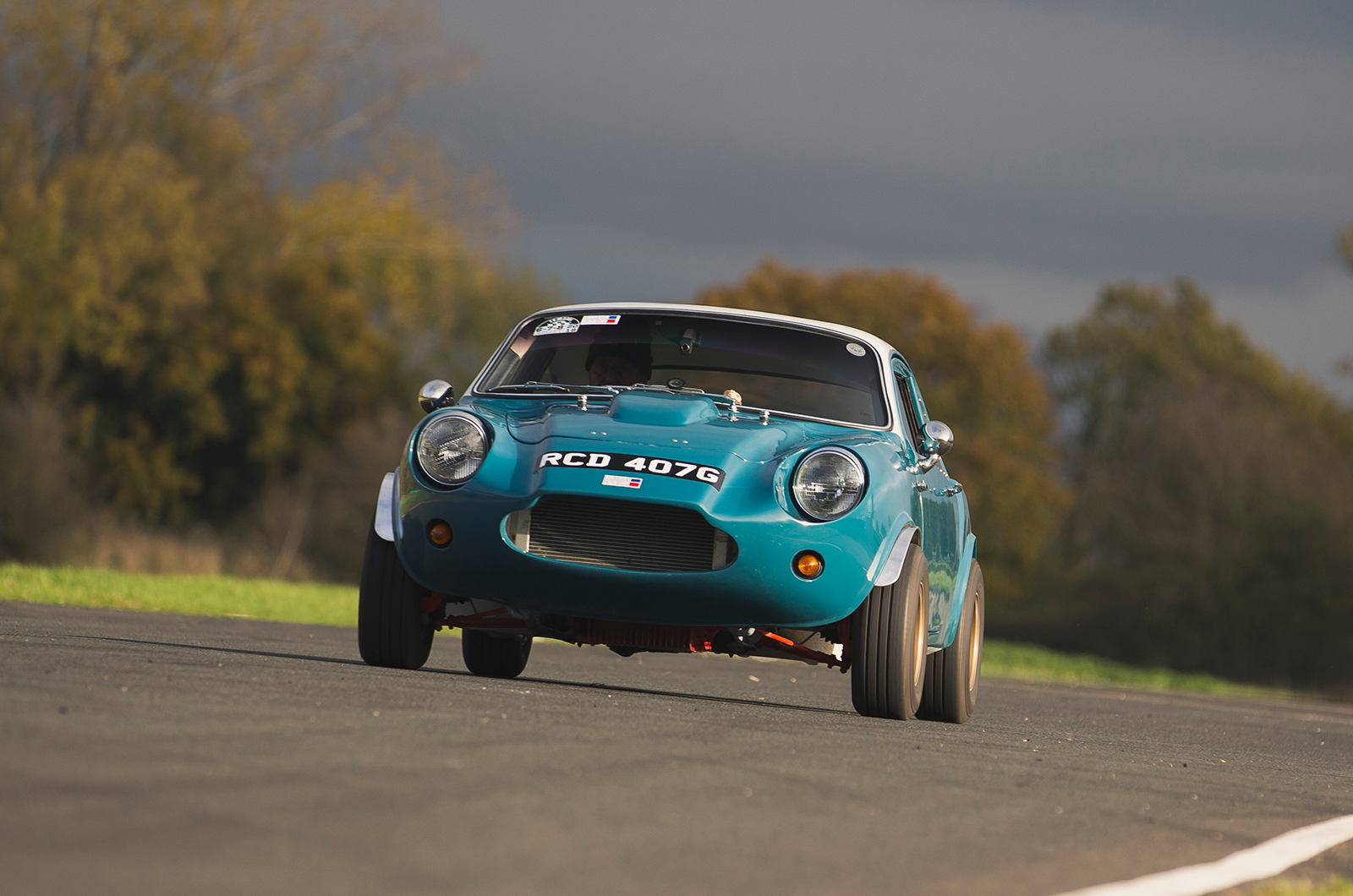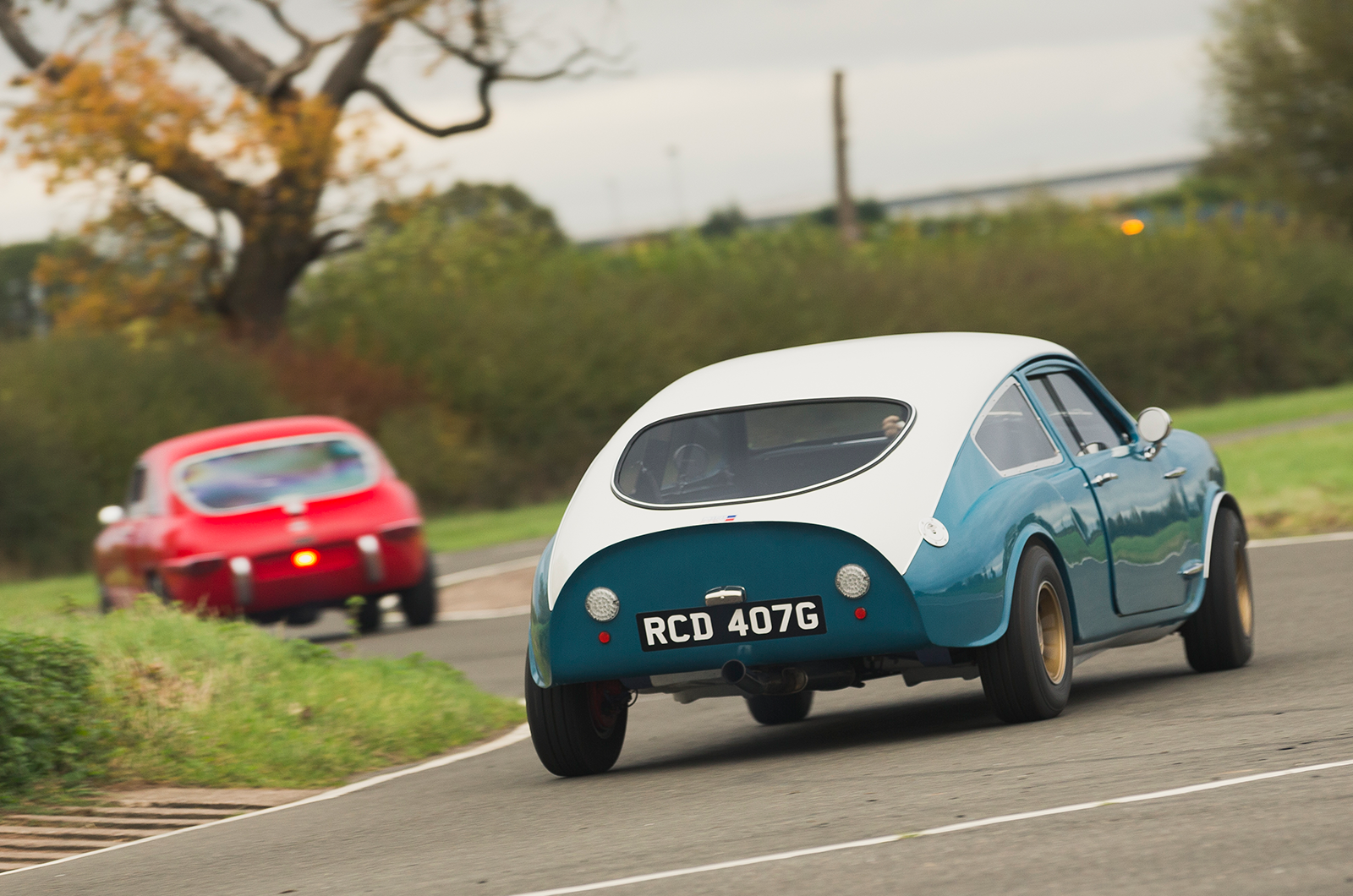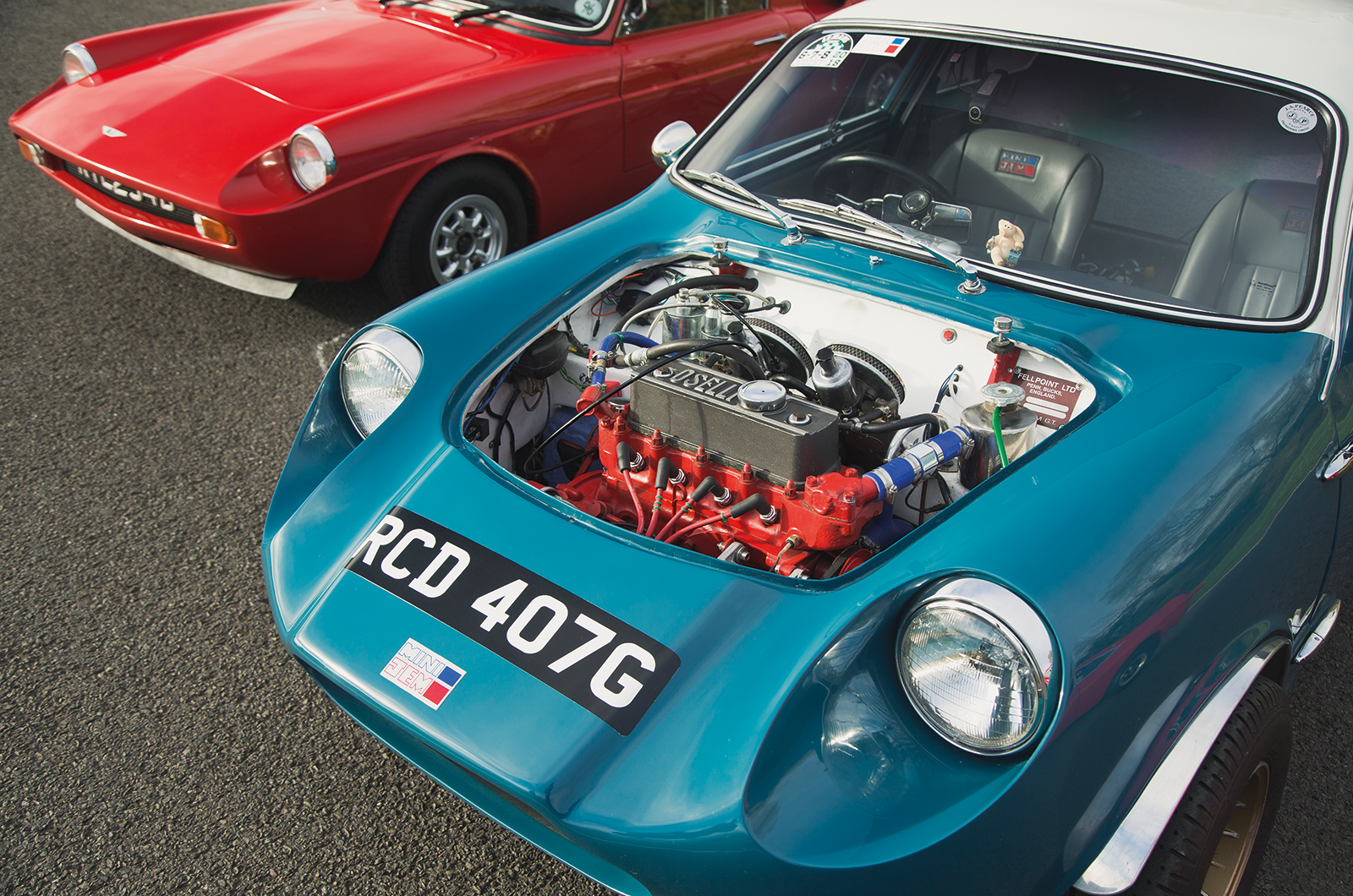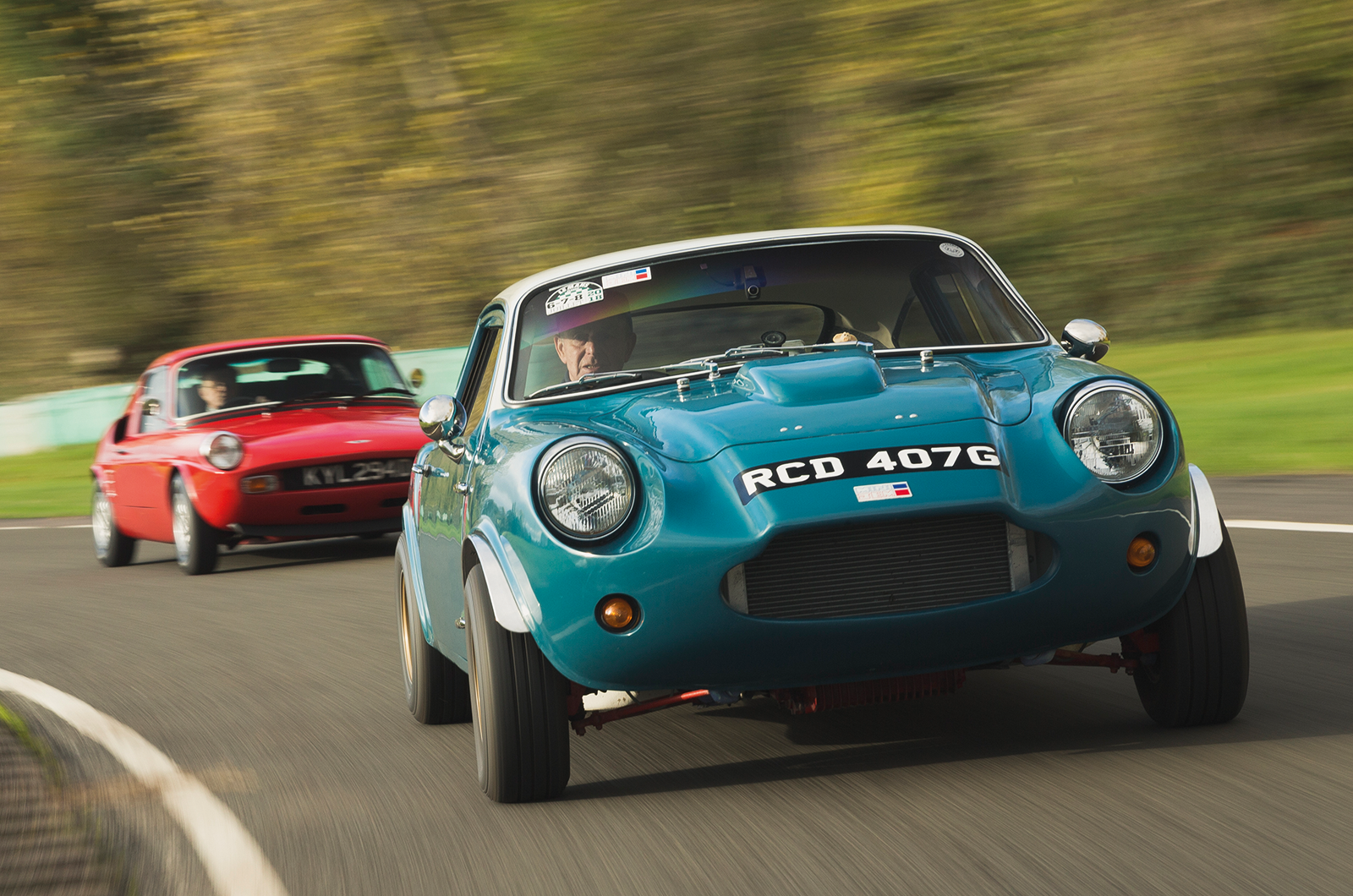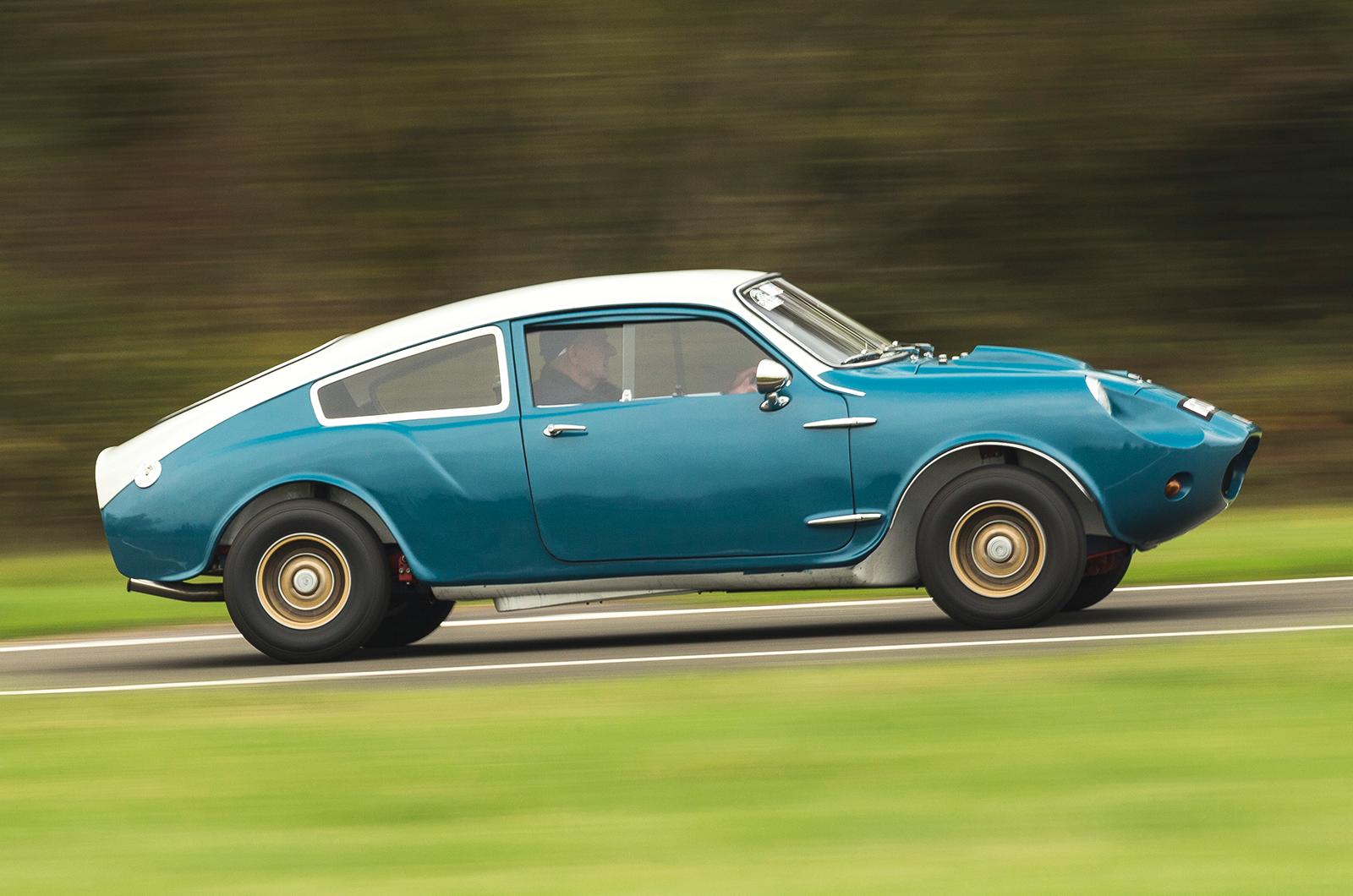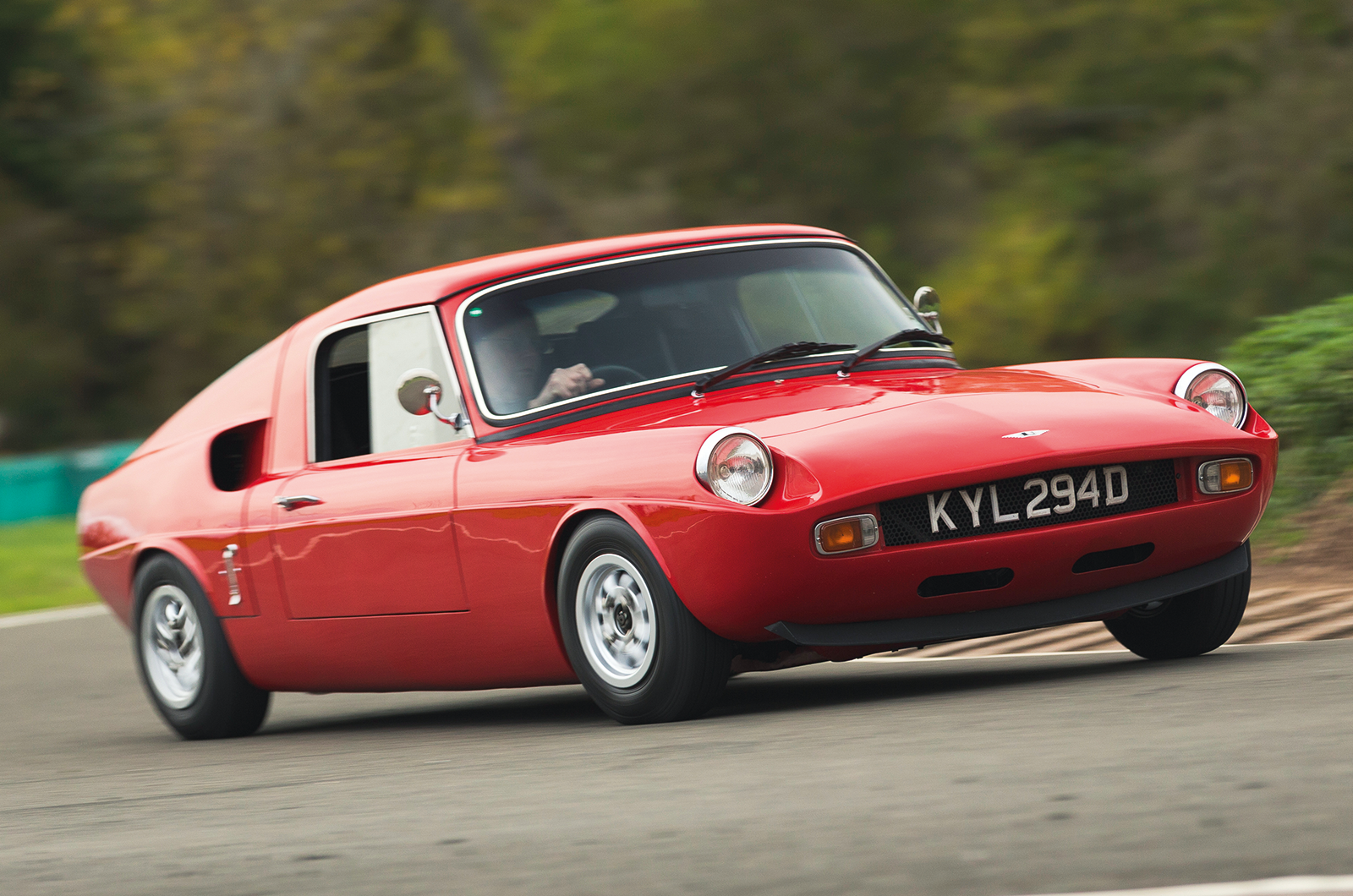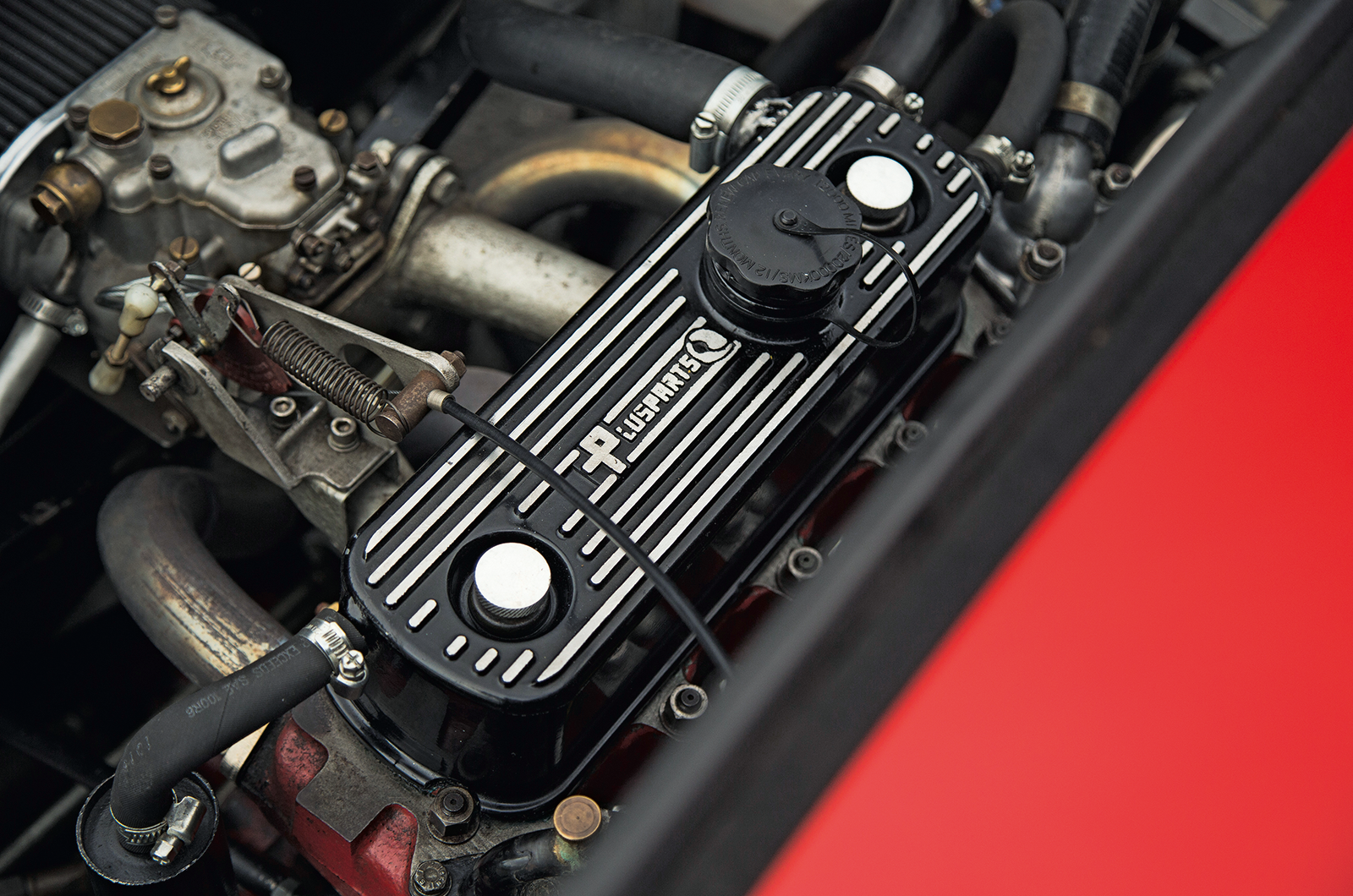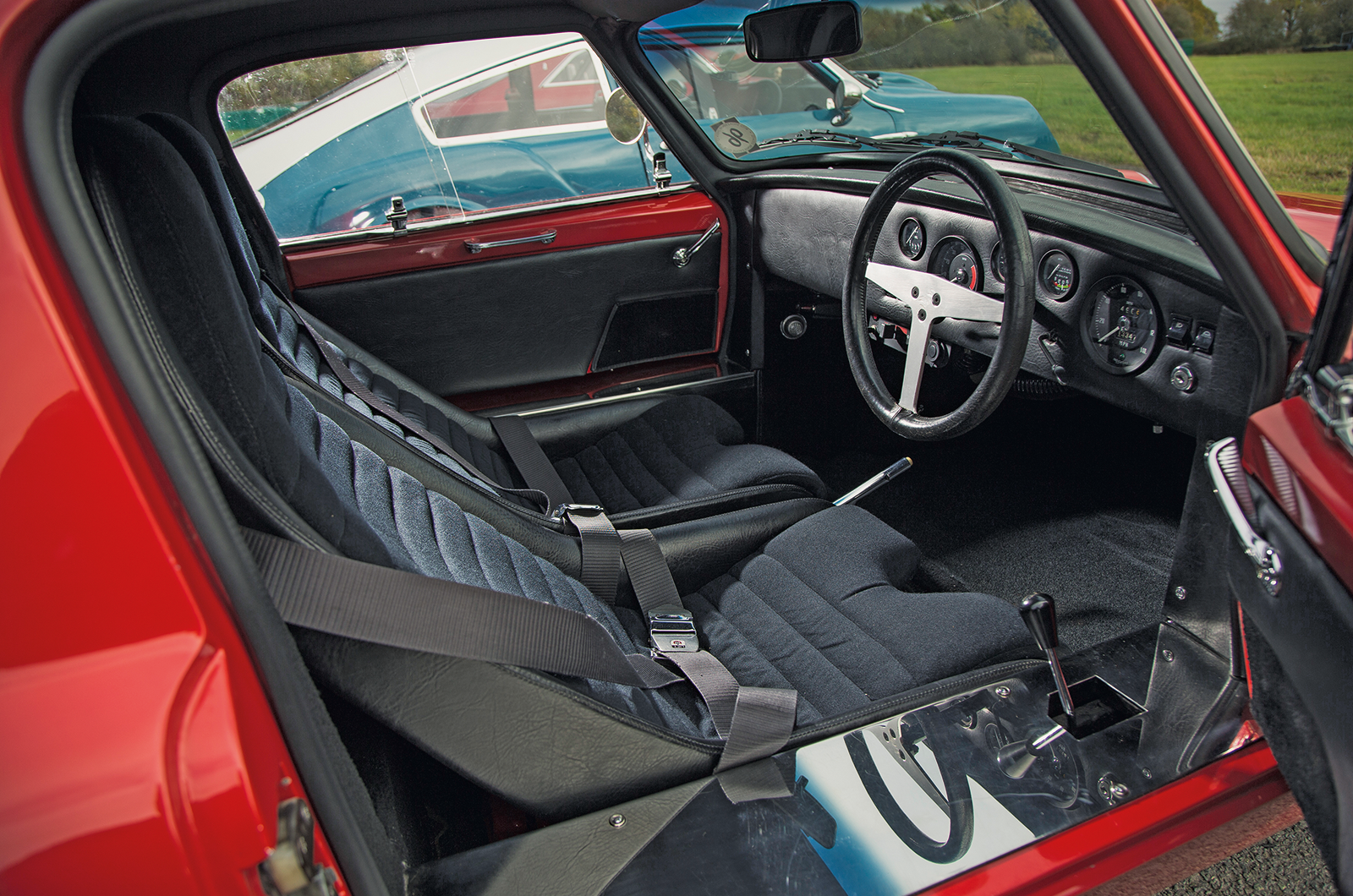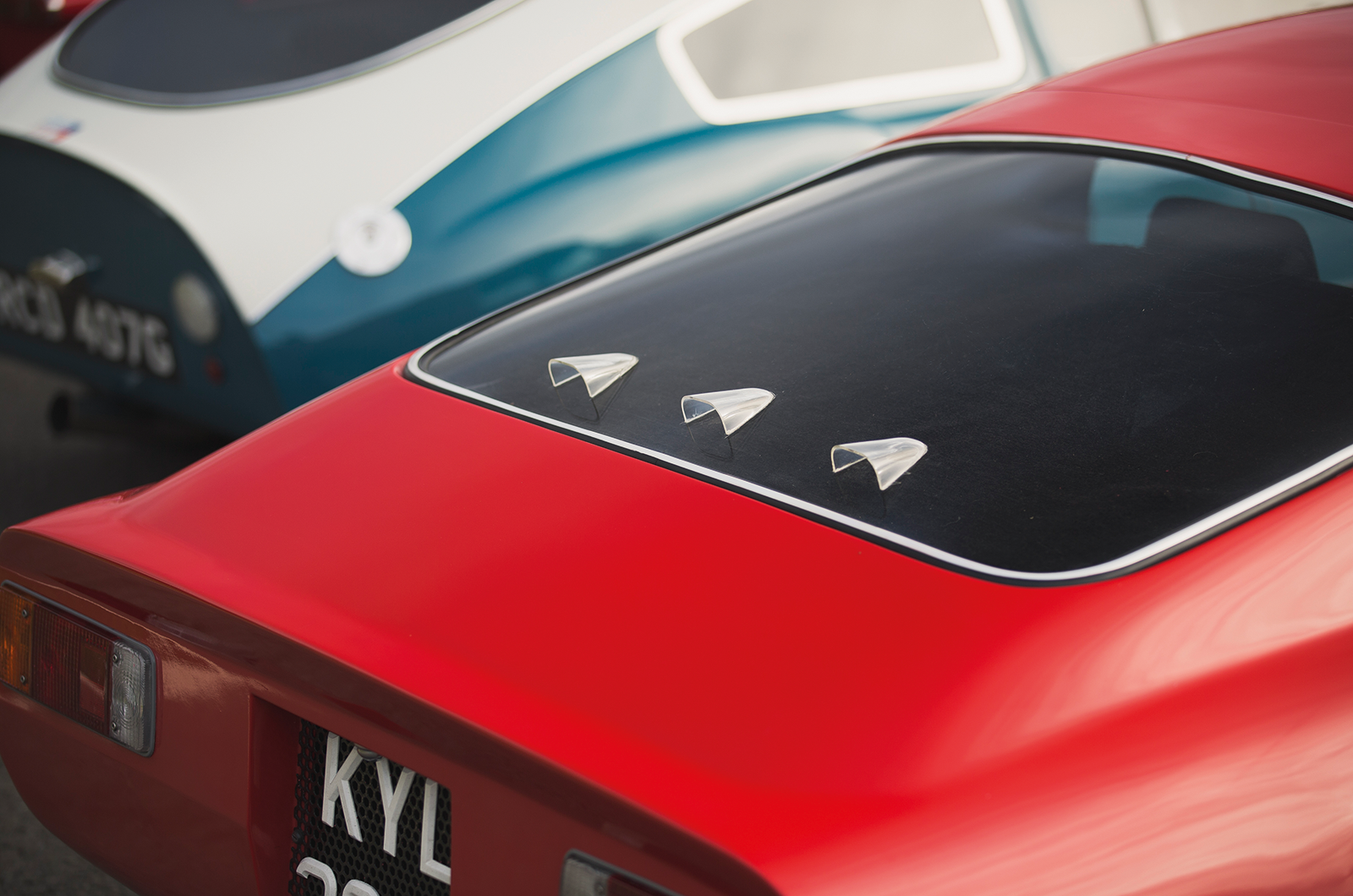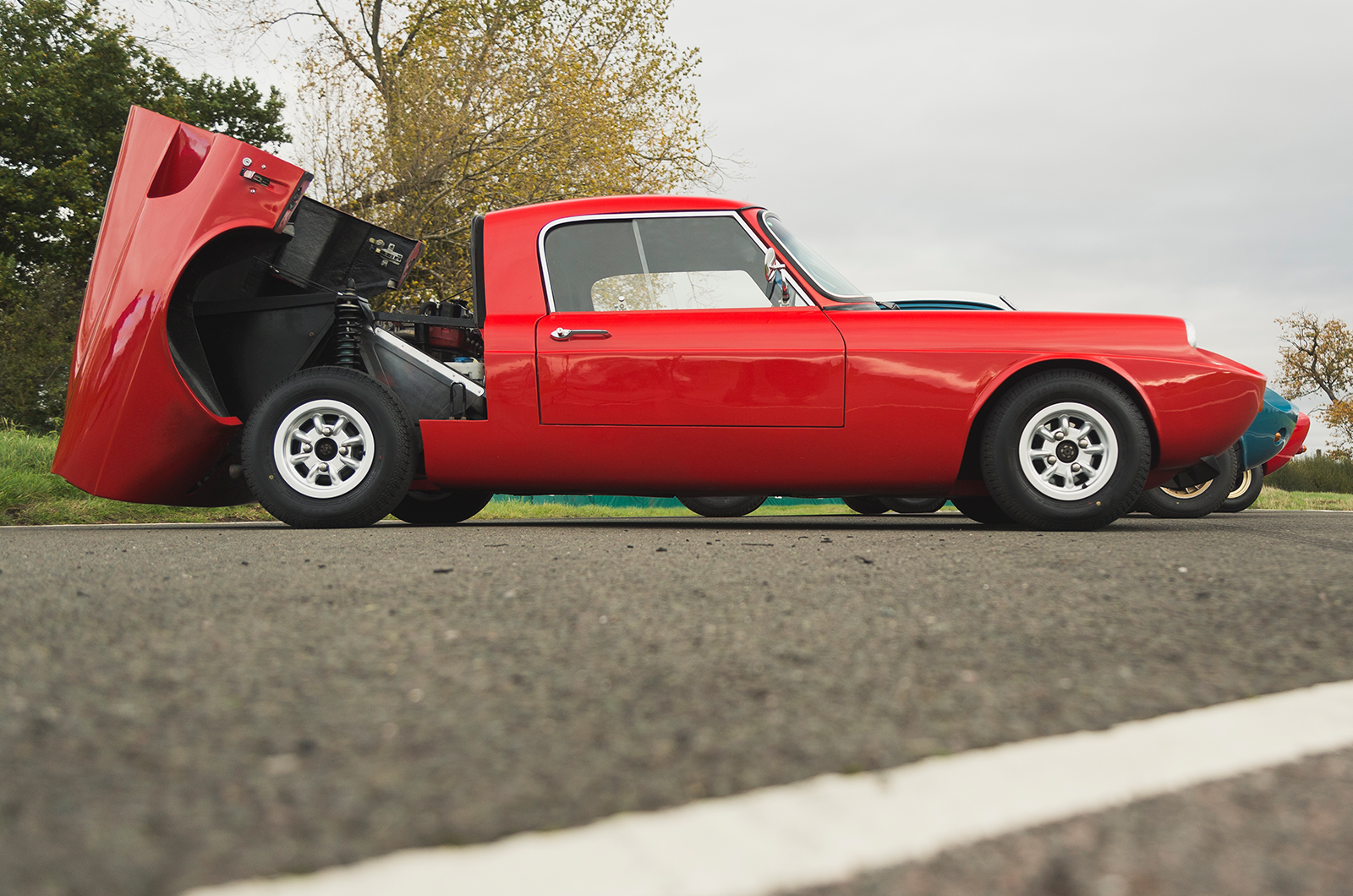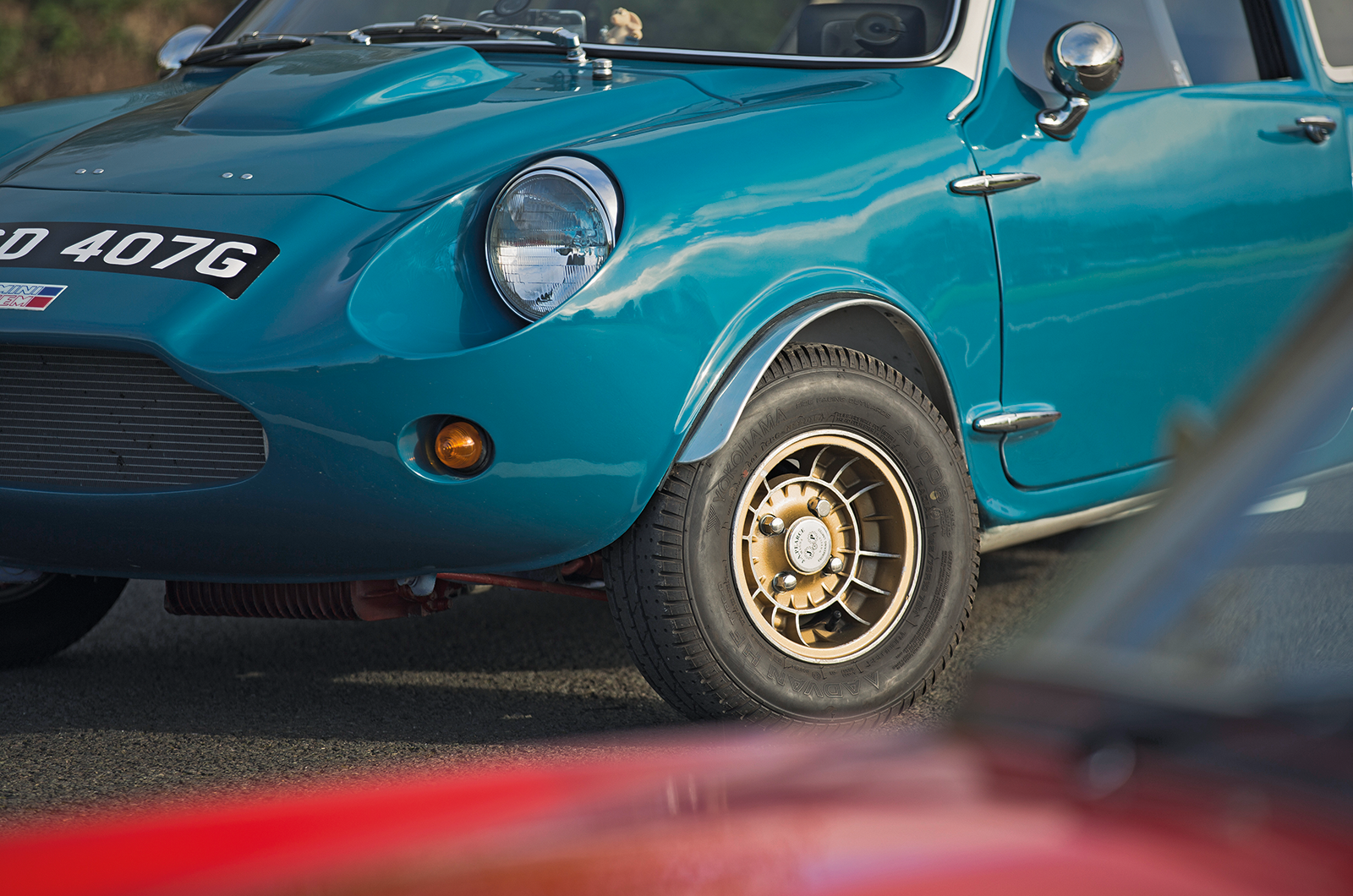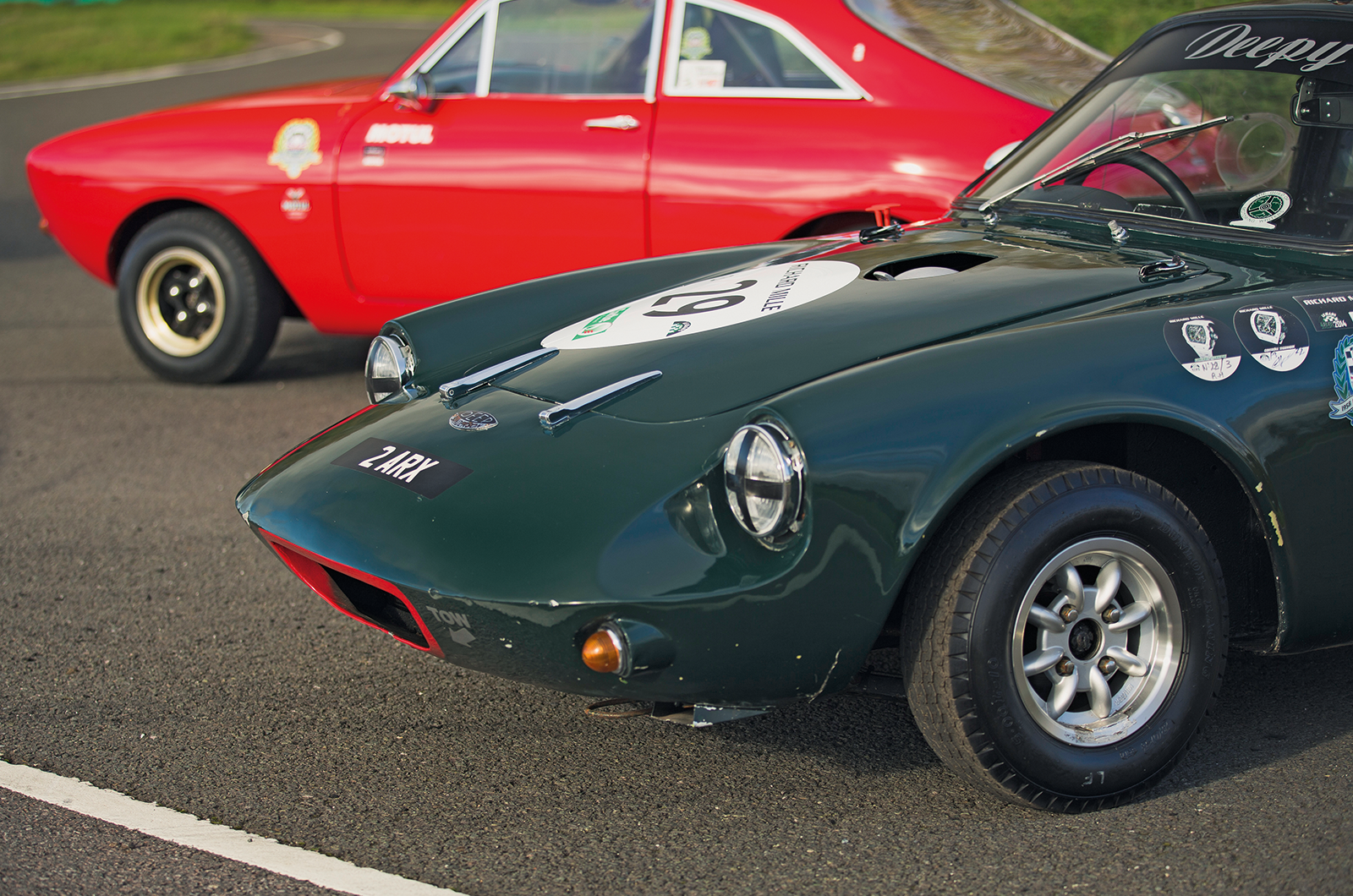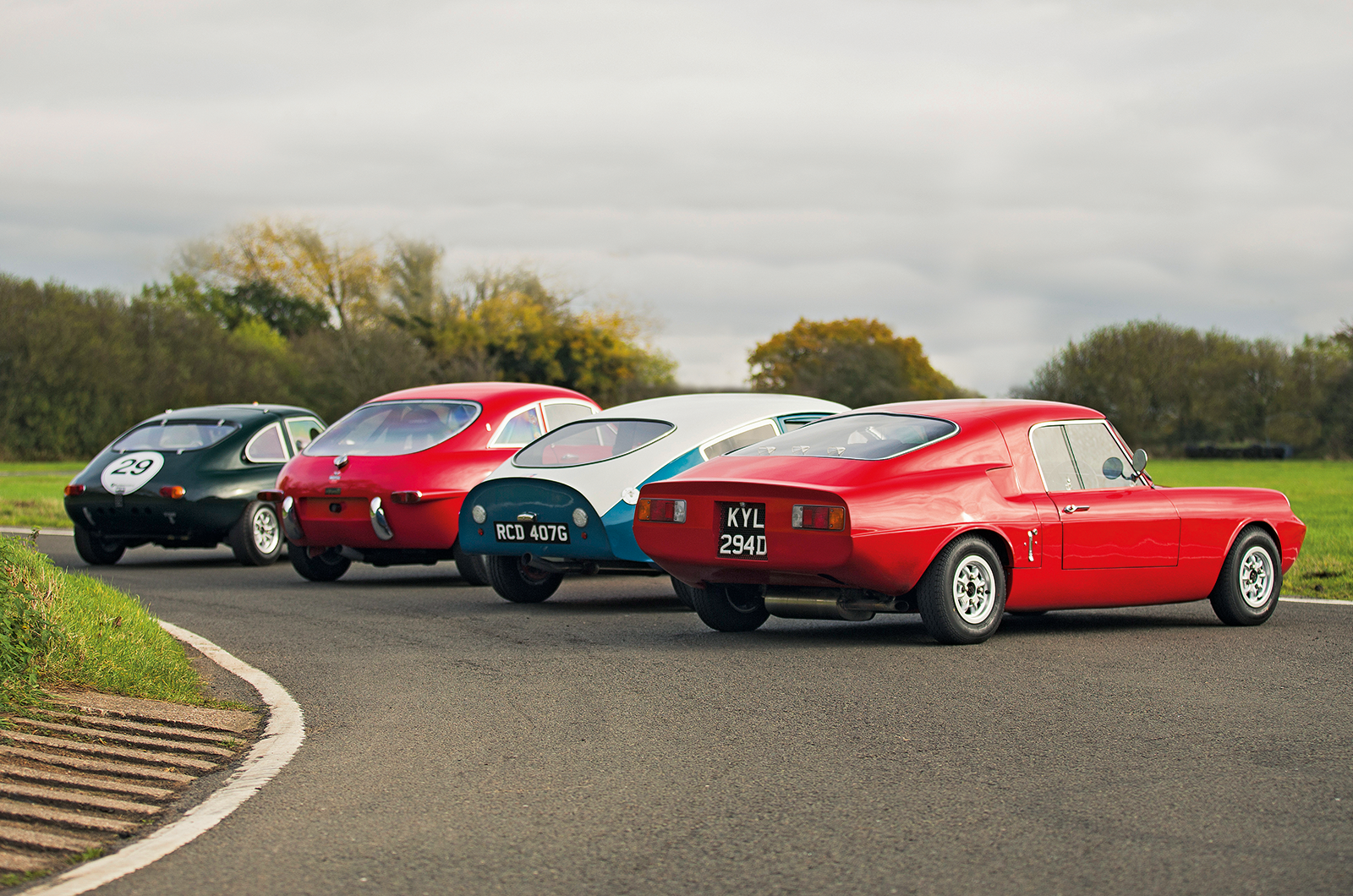“I was 20 and used to buy Hot Car magazine, which had an article on building a Jem on the cover of issue 1,” he enthuses.
“I had to have one. I bought the shell in October and it was rolling by January. I used a smashed-up Mini – I couldn’t wait to get it on the road.”
This Mini Jem’s cabin has been retrimmed superbly
Allen’s second Mk1 Jem was recently restored from a bare shell.
“The body wasn’t too bad,” he explains. “I think it had been a racing shell because it was very lightweight.”
Fittingly, it’s finished in period BMC colours of Toga White over Florentine Blue, a two-tone scheme that perfectly complements the Jem’s lines.
The cabin will feel familiar to anyone who has sat in a Mini Marcos, with a conventional layout similar to that of the Ogle – although in right-hand-drive specification – and a low roofline that will have your head touching the ceiling if you’re anywhere approaching 6ft.
The Jem is a near twin for Marsh’s Mini Marcos
As a road machine the Jem is up there with the best, with a wheel-at-each-corner layout that makes it feel planted and assured in turns.
The engine is a rev-happy fireball that suits the car beautifully for our short and winding test track; where the Deep Sanderson’s long stride made it difficult to get out of second gear, the Jem feels much more at home.
“The engine is an oddball,” reckons Allen. “It’s a 1275cc with a Cooper ‘S’ Mk3 head, but destroked with a South African crank in it, which takes it down to 1071cc. It’s a really high-revving engine – it’ll go to 8000rpm.”
‘As a road machine the Jem is up there with the best, with a wheel-at-each-corner layout that makes it feel planted and assured in turns’
By 1966 a number of people had tried turning the Mini’s humble components into something more exciting, and almost as many had failed spectacularly.
Rootes engineer Ernie Unger was more considered, enlisting professional help from the outset to realise his own mid-engined dream.
A chance meeting with designer Val Dare-Bryan led to the production of a Mini 850-powered rolling spaceframe chassis, with the exterior design handed to Ron Bradshaw, a stylist with the GT40 project.
Progress was swift and encouraging, and with Issigonis’s blessing of the aluminium-bodied Robert Peel & Company prototype came free access to the BMC-sourced running gear, including Mini uprights and modified arms that offered all-round independent suspension.
Only the tiny wheels reveal how small the well-proportioned Unipower GT is
Unger deftly navigated the potential pitfalls of small-batch production, and by the 1966 Racing Car Show had unveiled the car – dubbed the Unipower GT, a name inspired by backer Tim Powell and his Universal Power Drives firm – to an expectant crowd.
Available with either 998cc or 1275cc engines, the Unipower impressed not only in terms of its driving dynamics, but also its styling and comfort when compared to cheaper offerings such as the Marcos.
Tim Carpenter’s 1966 example – the first production car built – left the factory with a 998cc engine but was developed further after he bought it in 1982 and began a full restoration.
A mid-mounted motor for the Unipower GT
“It now has an over-bored 1398cc A-series,” he explains. “The engine is in a fairly gentle state of tune – it isn’t wild because I built the car for road use.
“It’s got 10.5:1 compression with a mild-to-warm road cam and a rally-spec head.
“A Nick Garrett exhaust at a stroke improved power and fuel consumption, and reduced noise dramatically, which goes some way to compensating for the induction noise from the Weber.
“If I was doing it again I’d build it with SUs.”
The Unipower GT’s low-slung cabin has the feel of a Ford GT40 in miniature
Despite various performance upgrades, including Cooper ‘S’ front discs like the original concept, the car clearly has a roadgoing focus.
“That’s why the wheelarches are the way they are; I wanted it to look broadly how it came out of the factory, which meant retaining the original body shape, meaning that it has to run 145-section tyres.”
Those narrow tyres might look a bit dainty, but they give the Unipower nimble handling that complements the chassis’ 48% front, 52% rear weight distribution.
Carpenter has spent a lot of time fettling the suspension geometry of his car, and the results are impressive, with a well-sprung and characterfully bouncy ride that is more reminiscent of that of the Mini than anything else here.
These neat vents extract hot air from the Unipower’s engine bay
Even the gearchange is sweet – a minor miracle, given the convoluted track the linkage follows from the driver’s-side sill to the gearbox.
It adds to the mini-GT40 feel, as if the Le Mans racer has been shrunk in the wash.
Stepping out of the Unipower GT leaves you wondering why this little mid-engined sports car didn’t run into the thousands rather than the 75 that eventually left the factory.
Though it clearly had the recipe for success, Powell lacked staying power and sold the company to young racer Piers Weld-Forester in 1968.
A reminder of where the Unipower’s engine is
The new owner started brightly, with a well-equipped workshop and a revised Mk2 version launched in ’69, but like so many before him he was lured on to the rocks in his pursuit of competition success.
He came close to realising his dream until a works-prepared car was crashed after-hours by a mechanic ahead of the Targa Florio, and a month later a 1340cc-engined car touched 140mph on the Mulsanne before blowing up in practice.
Ultimately, the project haemorrhaged money and the focus on racing forced the doors to close before the year was out.
The Jem has cheeky styling (left); the Deep Sanderson is a pure racing car
After a day of driving everything from highly tuned road cars to Le Mans warriors, I’m left wondering whether their commercial failures were down to the designs themselves or to the mismanagement, feuds and over-ambition that mark each story.
And to what extent Lawrence, Unger, Delmar-Morgan and Ogle realised the capability of the Mini, unlocking the potential inherent in the Issigonis wonder.
Ultimately, both the ambition and the ingenuity that led to the Deep Sanderson, Mini Jem, Unipower GT and Ogle SX1000 are reflected in their current owners.
All four brilliantly carry the spirit and traditions of their makers into the 21st century
Whether honed for racing or for the road, each of our test cars has been endlessly tinkered with, tuned and fettled.
Those original visionary designers and low-volume manufacturers saw something greater in the Mini; in turn, the true potential of their labours is still being realised more than half a century later.
Images: Luc Lacey
Thanks to TTP Performance (01527 882356)
READ MORE
The story of a very special classic Mini
10 top glassfibre classic sports cars
Great eight: Morgan Plus 8 vs MGB GT V8 vs Triumph TR8 vs TVR 350i vs Marcos Mantula
Greg MacLeman
Greg MacLeman is a contributor to and former Features Editor of Classic & Sports Car, and drives a restored and uprated 1974 Triumph 2500TC
